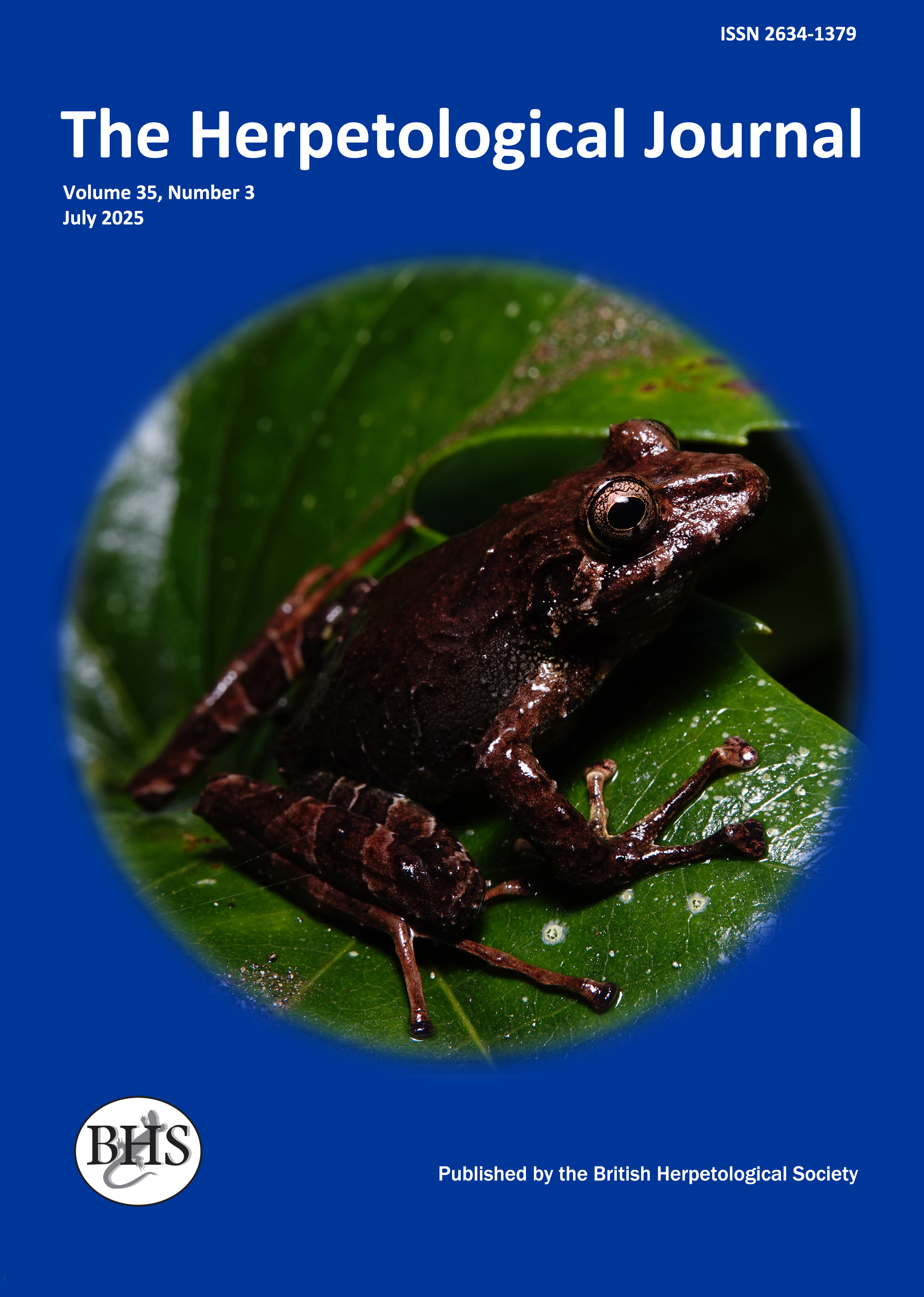
The Herpetological Journal
The Herpetological Journal is the Society's prestigious quarterly scientific journal. Articles are listed in Biological Abstracts, Current Awareness in Biological Sciences,Current Contents, Science Citation Index, and Zoological Record.
ISSN 0268-0130
2021 Impact Factor from Clarivate for the Herpetological Journal is 1.194, an increase of 0.332 from 2020.
pdf 05. A model host pathogen system for studying infectious disease dynamics in amphibians tiger salamanders (Ambystoma tigrinum) and Ambystoma tigrinum virus
1454 downloads
Open Access
pp.195-200
Authors: James P . Collins, Jesse L. Brunner, James K. Jancovjch And Danna M. Schock
Abstract: Pathogens are among the suspected causes of declining amphibian populations, but studying infectious diseases in small, threatened populations is ethically and experimentally questionable. Progress on understanding amphibian diseases requires model host-pathogen systems with populations large enough for robust experimental designs that do not threaten the amphibian host with extinction. We report on viral genomics, persistence, and host-pathogen dynamics of a model system we are u sing for studying an amphibian disease: tiger salamanders (Ambystoma tigrinum) and Ambystoma tigrinum virus (ATV). ATV is a large, cytoplasmic, double-stranded DNA virus that causes systemic infections in individuals and recurrent epidemics in tiger salamander populations in western North America. The A TV genome is now completely sequenced, which is an important step toward understanding viral pathogenesis. Further, because tiger salamanders and the closely related axolotl have a long history as model organisms for developmental genetics, the genetics, development, and physiology of these species are known at levels that can support detailed studies of the host-virus interaction. Salamanders b ecome infected with ATV via direct contact, feeding on infected tissues, and by immersion in water containing virus particles. There is no evidence of long-term persistence of ATV in the environment outside of sal amanders: the virus becomes quickly undetectable in pond water and dry mud, and no other syntopic hosts are known. ATV is usually lethal within 2-3 weeks of infection, although some salamanders lose overt symptoms of infection, including papules and lesions, and survive. In one laboratory experiment A TV was re-isolated from 40% of these survivors, which then transmitted the disease to uninfected.salamanders. Chronic infections also occur in field populations and appear to be the means by which A TV persists between epidemics. The tiger salamander-A TV system offers us a model for studying the host-pathogen interactions thought to be threatening some amphibian populations with extinction .
Keywords: amphibian declines, conservation, ATV, ranaviruses,

